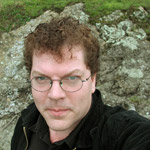
Assistant Research Professor
dassow@u.washington.edu
What got me turned on to biology as a high-school student was a brief paper showing that a single kinesin motor, in an appropriate buffer with some nucleotides for energy, can move a single microtubule across a glass slide. This was a striking demonstration that conspiracies of individual molecules animate living cells, and that the explanation for the dynamic properties of living cells, embryos, and organisms comes down to the intrinsic behaviors of networks of gene products that constitute the cell's machinery and physiology.
My main research interests are 1) dynamics of the cytoskeleton during cell division and related processes, and 2) dynamics of gene networks during pattern formation and cell differentiation in embryos. In addition I am fascinated by almost everything animal embryos do that can be observed through a microscope, and I regularly teach a course in comparative embryology at FHL. One of the ambitions that ties these projects together is to figure out how the macroscopic properties of cellular and developmental mechanisms emerge from the conspiracy of the molecular parts; the other is to explore how developmental and cellular mechanisms participate in the evolutionary process.
In the case of cell division, one of the main challenges is to achieve good enough imaging of the cytoskeleton both in normal and experimentally-perturbed cells to infer local interactions among the major players, including actin filaments, myosin motors, and microtubules. In addition, instead of picking one ideal cell type, I'm trying to exploit the diversity of "natural experiments" in animal embryology to infer what might be the fundamental cytomechanical modules biologists need to understand in order to explain how the division mechanism adapts to diversity in cell size, shape, rate of division, biomechanical properties, etc.
The gene networks project is primarily based on developing dynamical models of particular, well-studied genetic mechanisms, such as the networks involved in early Drosophila embryogenesis, to explore what kinds of systems-level properties emerge from the interactions of the genes responsible for particular pattern-formation tasks. In order to have a common, easy-to-use framework for building gene network models, we are developing a software package, Ingeneue, that encapsulates a biochemical-kinetics-style formulation of gene networks as systems of non-linear ordinary differential equations instantiated across fields of simulated cells. The goal is to be able to reconstitute, from the known facts about developmental genetics, life-like dynamical behaviors in simulation.